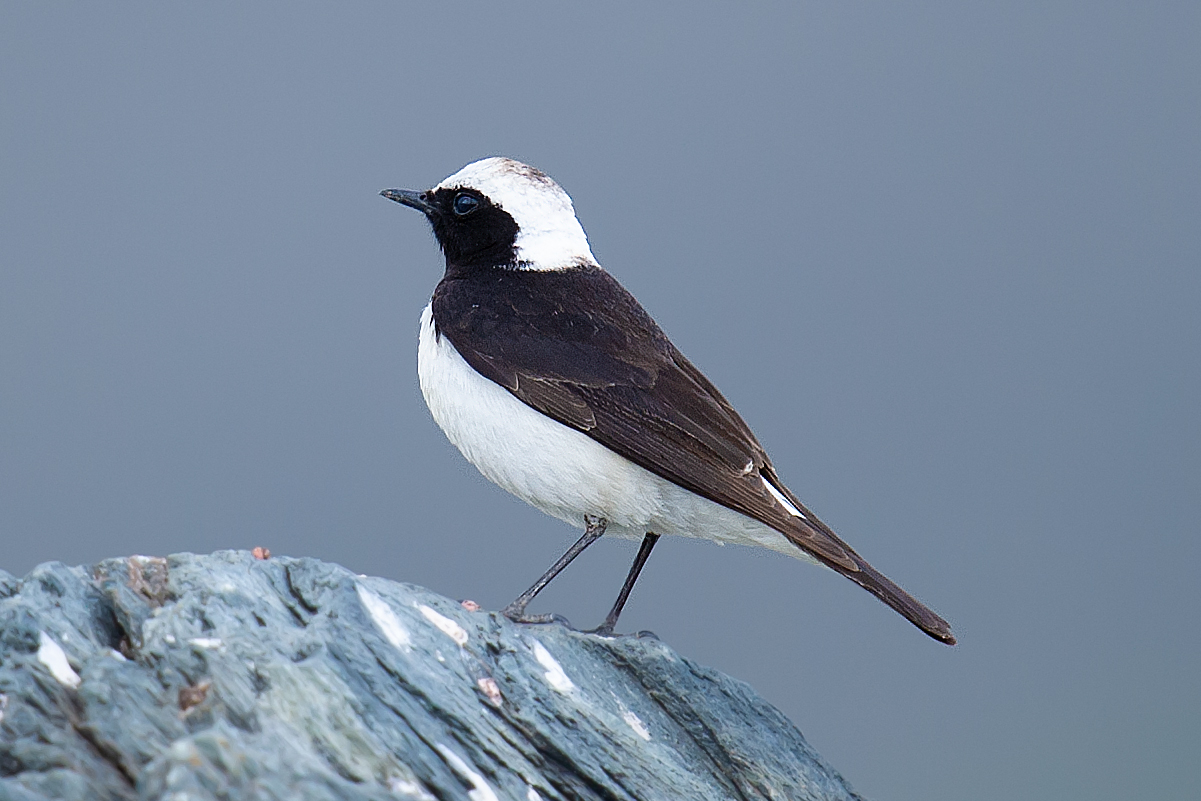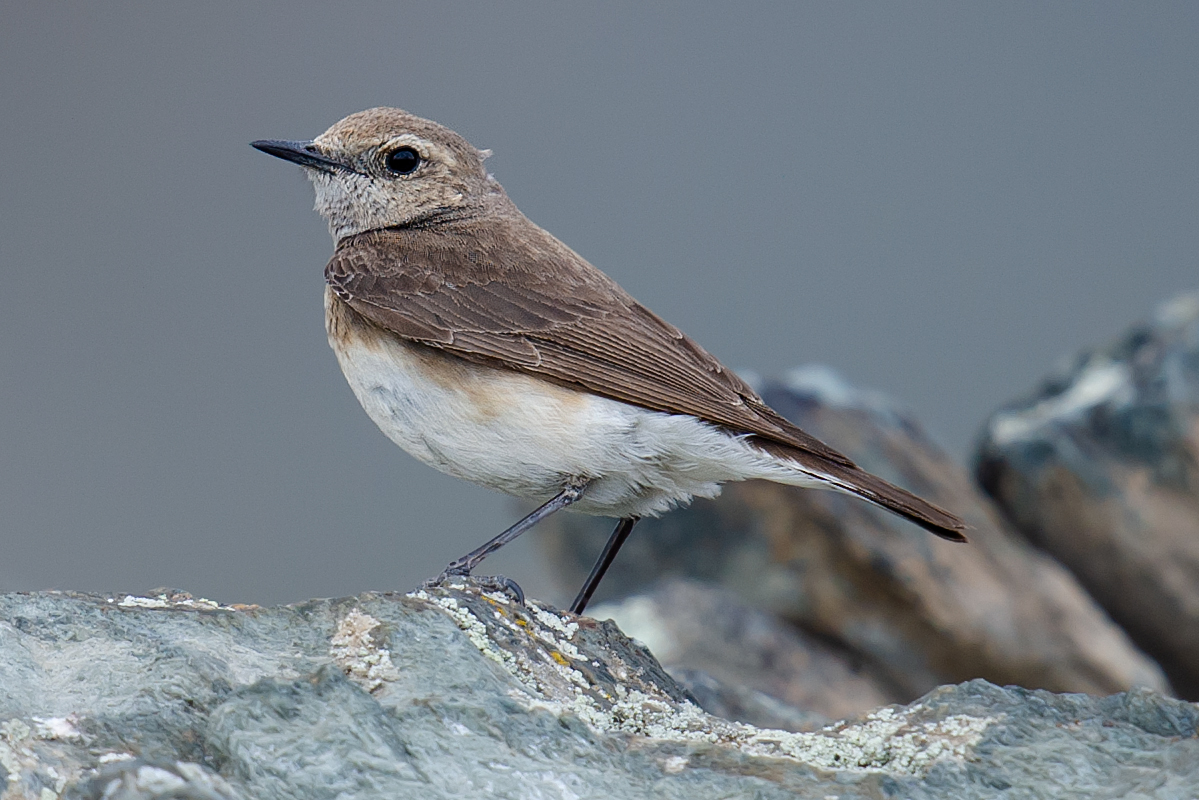


Pied Wheatear Oenanthe pleschanka breeds discontinuously from southeast Europe to China, wintering East Africa and Arabian Peninsula. In China breeds Xinjiang east to Inner Mongolia and Liaoning and as far south as Henan; but scarce or absent Jilin and Heilongjiang. HABITAT Variety of habitats, usually stony and rugged, in deserts, semi-deserts, and mountains. ID & COMPARISON Breeding male white on crown, nape, back, rump, and underparts. Breast may show buffish tinge. Has inverted-T tail pattern, with narrow black band (sometimes broken) on tips and vertical black bar extending down central rectrices. Rest of tail white, except for outermost edge to tail feathers. Wings, face, throat black. Rare morph “vittata” has white throat in both male and female. Winter male has black parts browner with buff fringing. Female greyish-brown above and on throat and breast, the latter with faint scaling or streaking; rest of underparts grade to buffish-white. Has faint supercilium. Rump and tail as male. First winter resembles female but scalier above and below. Some forms of Variable Wheatear O. picata (rare in China) closely resemble Pied. BARE PARTS Bill, feet black. VOICE Very short, buzzy, crackly song, often delivered in display flight that ends with earthward plunge. — Craig Brelsford
THE WHEATEARS OF CHINA
shanghaibirding.com has research on all five species of wheatear in China. Click any link:
Northern Wheatear Oenanthe oenanthe
Isabelline Wheatear O. isabellina
Desert Wheatear O. deserti
Pied Wheatear O. pleschanka
Variable Wheatear O. picata
ACKNOWLEDGEMENTS
Daniel Bengtsson served as chief ornithological consultant for Craig Brelsford’s Photographic Field Guide to the Birds of China, from which this species description is drawn.
